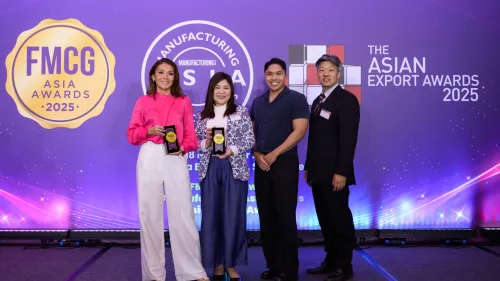
Tech-driven personalisation allows content optimisation, understanding opportunities to stay ahead of competition – PwC Asia Pacific's Karin Shenkar
She underscores the need for adaptability, data-driven strategies, and a nuanced understanding of consumer behaviour in a rapidly evolving market.
The dynamic FMCG industry, driven by shifting consumer expectations for sustainability and digital engagement, presents a complex landscape where companies must navigate diverse markets and trends for strategic success in this competitive environment.
Offering valuable insights is Karin Shenkar, a distinguished Partner and Retail Industry Leader for the PwC Asia Pacific's Deals Strategy practice. She specialises in advising private equity firms, boards, and CEOs throughout the investment cycle, with a focus on pre- and post-deal value creation in the retail sector across Asia Pacific.
With extensive experience working with prominent global brands in luxury, department stores, and specialty retail in North America, Europe, and throughout Asia Pacific, Karin excels in company turnarounds and profitability enhancement. Her deep expertise includes retail strategy, growth and expansion, and value creation for private equity investments.
As a judge at the FMCG Asia Awards 2024, Karin stresses that the FMCG sector is driven by sustainability, digitisation, market-specific strategies, and the ability to personalise offerings whilst ensuring long-term brand viability.
With your extensive experience in advising C-level executives in the FMCG and retail sectors, what do you see as the most significant trends shaping the industry in Asia Pacific over the next few years?
The trends shaping FMCG and Retail in APAC are the same as those shaping much of the rest of the world – namely, sustainability and digitisation. Winning brands will be those that can capture consumer attention through innovation in clean or eco-conscious products as much of the world becomes more aware of what they are consuming, what they are feeding their families and putting on their skin, and even how it is packaged. Innovation in digitisation is also critical in creating differentiated products, reaching consumers in tech-driven ways and selling to consumers through multiple channels.
What are the primary challenges FMCG companies face when expanding into new markets within Asia Pacific, and how can they overcome these hurdles?
Treating the entire region as one market with a consistent consumer base is an error that many brands have made in entering Asia Pacific. This region is nuanced with both established and emerging markets with varying income levels, younger and aging societies, and differentiated spending habits. Whilst the rising middle class is a driver for growth, there is a significant difference in the way middle-income consumers shop, prioritising value, and the higher-income shoppers who are seeking experiences and a premium offering. It is very important to understand each individual market in order to prioritise the right ones based on a company’s offering and pricing segmentation and also localise where needed.
What role does digital transformation play in enhancing operational efficiency and consumer engagement for FMCG companies? How can companies leverage this to stay ahead of their competitors in this rapidly evolving market?
Those companies that are prioritising data quality and data-driven decision-making are able to not only ensure greater operational and cost efficiency by automating certain tasks, streamlining processes and realising cost savings but also reaching their end customers in more interesting ways and innovating by analysing consumer behaviour, marketing effectiveness, inventory and supply chain dynamics and more. A digital strategy and capabilities are a competitive must.
What strategies do you recommend for FMCG companies to adapt to the increasing demand for personalised and customised products?
It is increasingly important to understand the various offerings for big data solutions available to FMCG companies. Understanding customer preferences with enhanced data solutions allows targeted outreach to the right customers and with personalised communication. Knowing that customers who shop more than one channel have a much higher overall spend, it is critical we get to know where our consumers are shopping and using data to understand every part of their journey and what they are looking for in order to win them over long term. Being able to appeal to the customers in a tech-driven way with a personalised effort, understanding what they are most interested in, allows us to optimise content, make recommendations, build larger basket sizes, understand expansion and innovation opportunities and keep ahead of the competition.
As an expert in advising private equity firms and executive teams, what are the key factors that should be considered when evaluating investment opportunities in the FMCG sector?
Of particular concern to my clients in this era of social media fads are brands and concepts that will not come and go but will have lasting power. Consumers can be very fickle and private equity and strategic clients are looking for brands and products with longevity, not viral trends on TikTok. Of course also of great importance are profitability and the ability to grow in a meaningful way. Is there opportunity to expand the offering or add adjacent products or consumers and is there opportunity to expand to other markets.
As a judge for the FMCG Asia Awards 2024, what innovative qualities or achievements are you particularly looking for in the nominees?
I’m excited to see interesting and innovative products that either have scientific or sustainable benefits or are very differentiated from anything in the market today, resonating with consumers either through their branding or through their offering.



















 Advertise
Advertise





